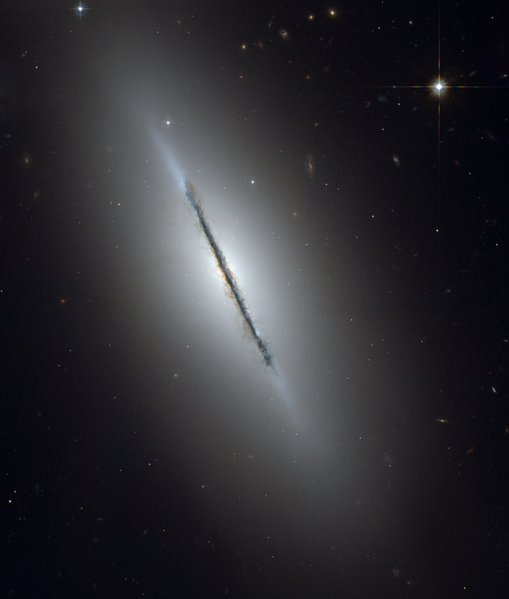File:Ngc5866 hst big.png

Dimensioni di questa anteprima: 509 × 599 pixel. Altre risoluzioni: 204 × 240 pixel | 408 × 480 pixel | 652 × 768 pixel | 870 × 1 024 pixel | 1 739 × 2 048 pixel | 3 190 × 3 756 pixel.
File originale (3 190 × 3 756 pixel, dimensione del file: 25,78 MB, tipo MIME: image/png)
Cronologia del file
Fare clic su un gruppo data/ora per vedere il file come si presentava nel momento indicato.
| Data/Ora | Miniatura | Dimensioni | Utente | Commento | |
|---|---|---|---|---|---|
| attuale | 19:38, 16 feb 2009 |  | 3 190 × 3 756 (25,78 MB) | Spencer | {{Information |Description={{en|1=From original NASA press release: :This is a unique view of the disk galaxy en:NGC 5866 tilted nearly edge-on to our line-of-sight. Hubble's sharp vision reveals a crisp dust lane dividing |
Pagine che usano questo file
Le seguenti 3 pagine usano questo file:
Utilizzo globale del file
Anche i seguenti wiki usano questo file:
- Usato nelle seguenti pagine di ab.wikipedia.org:
- Usato nelle seguenti pagine di ace.wikipedia.org:
- Usato nelle seguenti pagine di af.wikipedia.org:
- Usato nelle seguenti pagine di af.wikibooks.org:
- Usato nelle seguenti pagine di af.wikiquote.org:
- Usato nelle seguenti pagine di af.wiktionary.org:
- Usato nelle seguenti pagine di ak.wikipedia.org:
- Usato nelle seguenti pagine di als.wikipedia.org:
- Usato nelle seguenti pagine di am.wikipedia.org:
- Usato nelle seguenti pagine di am.wiktionary.org:
- Usato nelle seguenti pagine di ang.wikipedia.org:
- Usato nelle seguenti pagine di ang.wiktionary.org:
- Usato nelle seguenti pagine di an.wikipedia.org:
- Usato nelle seguenti pagine di an.wiktionary.org:
- Usato nelle seguenti pagine di arc.wikipedia.org:
- Usato nelle seguenti pagine di ar.wikipedia.org:
- Usato nelle seguenti pagine di ar.wikibooks.org:
- Usato nelle seguenti pagine di ar.wikinews.org:
- Usato nelle seguenti pagine di ar.wikiquote.org:
- Usato nelle seguenti pagine di ar.wikisource.org:
- Usato nelle seguenti pagine di ar.wikiversity.org:
- Usato nelle seguenti pagine di ar.wiktionary.org:
- Usato nelle seguenti pagine di arz.wikipedia.org:
- Usato nelle seguenti pagine di ast.wikipedia.org:
- Usato nelle seguenti pagine di ast.wiktionary.org:
- Usato nelle seguenti pagine di as.wikipedia.org:
- Usato nelle seguenti pagine di av.wikipedia.org:
- Usato nelle seguenti pagine di ay.wikipedia.org:
- Usato nelle seguenti pagine di az.wikipedia.org:
- Usato nelle seguenti pagine di az.wikibooks.org:
- Usato nelle seguenti pagine di az.wikiquote.org:
- Usato nelle seguenti pagine di az.wikisource.org:
- Usato nelle seguenti pagine di az.wiktionary.org:
- Usato nelle seguenti pagine di bat-smg.wikipedia.org:
- Usato nelle seguenti pagine di ba.wikipedia.org:
- Usato nelle seguenti pagine di bcl.wikipedia.org:
- Usato nelle seguenti pagine di be-tarask.wikipedia.org:
- Usato nelle seguenti pagine di beta.wikiversity.org:
- Usato nelle seguenti pagine di be.wikipedia.org:
- Usato nelle seguenti pagine di be.wikibooks.org:
Visualizza l'utilizzo globale di questo file.
